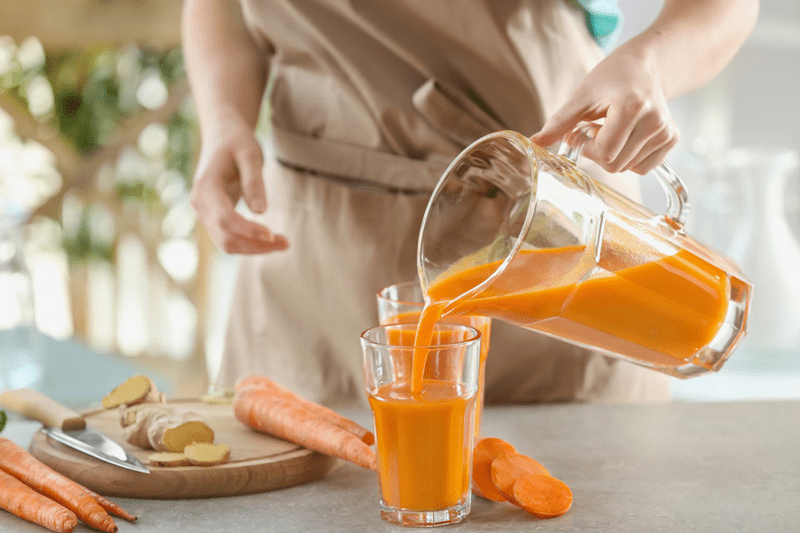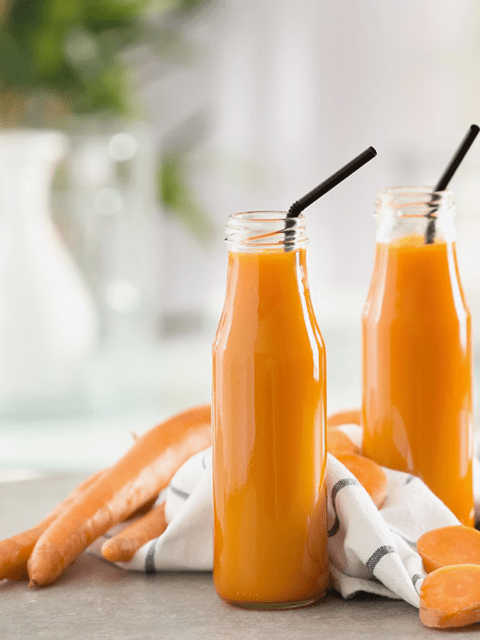#3 – Caring for Your Juicer

 Add to favorites
Add to favorites
Taking an extra few minutes to clean and care for your kitchen equipment properly will help extend the life and function of your investments. I could have called this posting “Cleaning Your Juicer” which is really what this post is about but honestly; we first must care about our equipment before we can thoroughly clean it.

Today, I will be going over a few simple ways that will keep your juicer humming. Even though I can’t go over every make and model of juicers on the market, the following suggestions will easily transfer from unit to unit.
I know that just the mere thought of cleaning the juicer once you are done making your juice is about enough of a hindrance to prevent you from wanting to use it. Here is one thing that will reduce the stress that surrounds your machine. The truth of the matter is, most people don’t take the time in getting to know their equipment. Understanding what each piece does, how it works, and how it goes together (or disassembles) will make the job less daunting. For most juicers, two to five minutes is the time required to clean and reassemble, so it is ready for the next juice making event.
The Basic Outline
- Start filling the sink with hot soapy water.
- Juice your fruits and veggies while the sink is filling (keep an eye on the water level).
- Pour your juice into a beautiful glass.
- Quickly disassemble the juicer parts and place them in the soapy water.
- Sit down, slowly enjoy your juice. Be sure to “chew” each mouthful to get those digestive juices flowing. Use this time to give thanks for the nourishment that you are taking into your body. Take nice slow breaths in between and embrace YOUR time. By the time you are done enjoying the juice, the juicer parts will have had a nice soak.
- Wash and rinse each juicer part, placing them on the drying rack.
- Move on to the next task of the day while the juicer parts dry naturally.
Here is a more in-depth look at cleaning your juicer…
Swish and Rinse
- Swish and Rinse – I like to think of this as rinsing your mouth out with water. It’s an excellent way to get the tidbits cleaned out before moving into a deeper cleaning.
- After you have juiced all of your produce, pour the juice into a drinking glass. Now take a glass of warm water and pour it through the chute of the juicer. The water will swish through the machine and help push through any last bits and pieces.
- Unplug the juice and disassemble.
The Screen/Filter
Most electric juicers operate by forcing fruit and vegetables through a wire mesh screen. This screen allows the juice to flow through the tiny holes in the screen while the pulp is trapped, leaving you with a mostly pulp-free glass of goodness. If this screen isn’t properly cleaned after each use, the pulp may become trapped in the tiny holes and clog your filter, which can reduce the effectiveness of your juicer. Plus, it can become a breeding ground for bacteria and mold. Here are a few helpful tips that should become habit forming…
Remove the Screen
- Be sure to disassemble and clean your juicer as soon as you finish juicing to prevent the fruit or vegetable pulp from drying on the screen. While juicing, fill your sink cavity with warm soapy water.
- While the pulp is still wet, remove as much as you can and store in a freezer safe container. These pulps are great to add cracker, bread, or soup recipes.
Clean the Screen
- Sometimes a simple soak in hot water will do the trick, but if you got sidetracked and things got a little crusty, you will need to put a little bit more elbow grease into it.
- Use a nylon brush to scrub the screen while holding it under running water until all visible fiber or pulp is removed. When the screen is completely clean, water should flow smoothly through all of the tiny holes. I like to save my old toothbrushes and use them to get into the nook and cranny of things.
- If the screen is still clogged after scrubbing, try soaking it in lemon juice and hot water for roughly ten minutes.
- The best way to see if your juicing screen is clean is to hold it up and look through it at a strong light source. You will easily detect if any of the holes are still clogged.
- Be sure to rinse each part thoroughly to prevent the soap from contaminating your juice the next time you use your juicer.
Drying the Screen
- Air dry – You can let the screen air dry.
- Hand dry – If you hand dry the screen be sure to use a lint-free towel, so the fibers don’t lodge and clog the tiny holes.
- If you use city or municipal water, it would be best to hand dry the screen and the other pieces. The minerals in the water can leave a mineral deposit discoloration.
Juicer Parts & Pieces
Washing the Parts & Pieces
- Outside of the screen, the other pieces typically wash up quickly.
- As you rinse each piece, give a quick glance-over to make sure that none of the pulp has lodged itself in cracks and crevices. If they have, use the small brush that most juicers come with or try a toothbrush to get it all out. Remember, these are areas that can breed bacteria — not a great addition to your fresh juice.
- If there are any metal parts on your juicer that need to be soaked, don’t let them soak for too long or they could rust.
- Dishwashers – I am not a fan of putting my juicer parts in the dishwasher. First and foremost, read the owner’s manual for your make and model. If in doubt then hand wash. If certain parts are dishwasher safe, place them in the upper rack, and run the washer as soon as you can. Allowing these pieces to sit caked in the pulp for an extended period will only cause more cleaning.
Drying the Parts & Pieces
- If you are cold-pressed for time (haha), invest in an inexpensive drying rack. They fold and store nicely under the sink. Place a towel on the counter top, set up the drying rack, and you are ready to go.
- As you wash and rinse each piece, place them on the drying rack.
The Juicer Base
- Wipe the base with a soft damp cloth or sponge and clean all other parts in warm, soapy water, using a mild detergent, rinsing well and drying thoroughly. Do not use abrasive scouring pads or cleaners when cleaning the parts or Motor Base as they may scratch the surface.
- Wipe any excess food particles from the power cord.
- Once all the parts are washed and dried, assemble the juicer, so it is ready to go the next time you call upon its services.
Stains and How to Remove Them
- Discoloration of the plastic may occur with strongly colored fruit and vegetables.
- Never use Chlorox or bleach.
- Lemon Juice / Water – To help with stains, wash parts immediately after use. The plastic parts can be soaked in water with 10% lemon juice or they can be cleaned with a non-abrasive cleaner. Or…
- Vinegar / Water / Baking Soda – Fill up the sink with water. Make a solution of approximately 1 part white vinegar to 10 parts water. Then add 100 grams of baking soda and stir it. Make sure that all parts are completely covered in water for about 30 minutes. Once the stains have lifted, wash and dry as indicated above. Or…
- Baking Soda / Water – Make a solution of 16 oz of lukewarm water to 4 tablespoons of baking soda. Soak the juicer parts overnight in this solution. Rinse, wash, and dry as usual.
- Again, remember, if your juicer has metal parts, then don’t soak it for long hours as they could rust or damage.
Stain Causing Foods:
Clogs and How to Prevent Them
- If you juice overly ripe fruit, it may cause the screen in the juicer to clog quicker.
- Fibrous fruits and veggies can cause the machine to clog while juicing and make it hard to clean.
- Not thoroughly cleaning the screen can cause the machine to clog.
- When juicing fibrous foods, feed them into the unit in small intervals, following with a hard or wet food item such as carrots or apples. This process will help push the fibers through the machine.
Clogging Foods
- Celery
- Ginger
- Dark leafy greens
- Turmeric root
© AmieSue.com



 Add to favorites
Add to favorites
